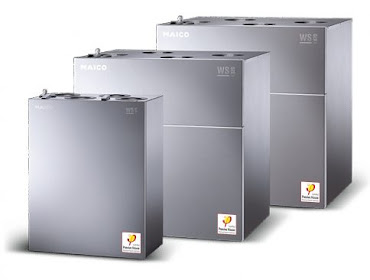Understanding Energy – What is a Passive House?
The idea of a passive house comes from Swedish and German academics from the late 1980s, developing concepts of housing in Europe, encouraging ultra-low energy consumption while still allowing for high air quality in and around the home.
It’s one of the world’s leading energy efficient standards and allows for comfortable and environmentally friendly homes and buildings that are affordable too. While not quite a brand name, but more of an idea, a passive house is a construction concept that while relatively new, is proven to make a positive impact on your immediate surroundings.
Owning a Passive House vs. Low Energy House
Don’t confuse a passive house and a low energy house. The two of them are very different and a passive house can and will give you energy savings of up to 90% when compared to some brand new builds of 75% or less. On average, less than 1.5 litres of heating oil is used per square meter of living space per year, and the same studies show that buildings in warmer climates like Australia require more energy for cooling rather than heating, but still have similar savings.
Owning a Passive House vs. Low Energy House
Don’t confuse a passive house and a low energy house. The two of them are very different and a passive house can and will give you energy savings of up to 90% when compared to some brand new builds of 75% or less. On average, less than 1.5 litres of heating oil is used per square meter of living space per year, and the same studies show that buildings in warmer climates like Australia require more energy for cooling rather than heating, but still have similar savings.
Requirements for a Passive House
In order to ensure that your home meets the requirements for a passive house, one needs to ensure that the builders use intelligent, passive design to ensure the house has best practices in mind. Here are a few requirements needed:
● Primary Energy
The total energy that is needed for all domestic appliances must not exceed 60kWh/m2 of living space each year. This includes heating, hot water and electricity.
● Airtight
Passive buildings are airtight and need no more than 0.6 air changes per hour at 50 pascals of pressure.
● Thermal Comfort
Living areas have to be comfortable with no more than 10 percent of the houses in a year exceeding 25 degree Celsius.
● Space Heating
Energy demands for space heat can not exceed 15 kWh/m2 of living space per year.
When compared to traditional houses, these numbers are a lot smaller than even new built homes, and in having a passive house, owners have to have a few fundamentals that will help them qualify. By having triple glazing insulating the windows and the gaps between glass panes are sealed and filled with gas. This promotes low energy usage by keeping out cold, but also insulating heat inside the house. They also usually have heat recovery ventilation systems to provide fresh air, which will usually have a single backup heater for the house, and are completely airtight.
Turn your home into a passive house with RecoveryVent – 1300 137 110
In order to ensure that your home meets the requirements for a passive house, one needs to ensure that the builders use intelligent, passive design to ensure the house has best practices in mind. Here are a few requirements needed:
● Primary Energy
The total energy that is needed for all domestic appliances must not exceed 60kWh/m2 of living space each year. This includes heating, hot water and electricity.
● Airtight
Passive buildings are airtight and need no more than 0.6 air changes per hour at 50 pascals of pressure.
● Thermal Comfort
Living areas have to be comfortable with no more than 10 percent of the houses in a year exceeding 25 degree Celsius.
● Space Heating
Energy demands for space heat can not exceed 15 kWh/m2 of living space per year.
When compared to traditional houses, these numbers are a lot smaller than even new built homes, and in having a passive house, owners have to have a few fundamentals that will help them qualify. By having triple glazing insulating the windows and the gaps between glass panes are sealed and filled with gas. This promotes low energy usage by keeping out cold, but also insulating heat inside the house. They also usually have heat recovery ventilation systems to provide fresh air, which will usually have a single backup heater for the house, and are completely airtight.
Turn your home into a passive house with RecoveryVent – 1300 137 110




Comments
Post a Comment